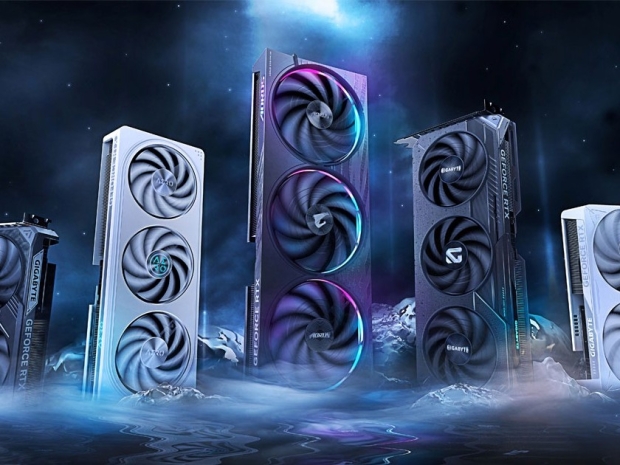A Quasar Zone forum user complained their Aorus Master RTX 5080 drooling grey putty after a few weeks of light gaming. The card had been mounted vertically, which apparently turned Gigabyte’s "special thermal gel" into a slow-motion lava flow.
Other owners of Gaming OC, Windforce, and Aorus Master cards quickly piled on with their horror stories, showing thermal compound sliding out onto the PCB and PCIe slot.
In an official statement on 25 April, Gigabyte admitted its RTX 50 and Radeon RX 9000 cards use a "deformable" gel rated to 150 °C, but early production batches had too much.
"The excess material may cause the gel to appear more prominent, extended, and potentially separated from the designated area," Gigabyte said.
The company stressed the issue was "cosmetic" and "does not compromise performance, stability, or product lifespan."
Gigabyte has trimmed the gel quantity in newer cards, but told users to ring up customer support if they find their cards leaking paste
Unlike traditional pads, Gigabyte’s thermal gel was meant to fill microscopic gaps more efficiently, boasting better thermal transfer. It is non-conductive, so at least your leaking goo should not fry your GPU, but it can coat the board and connector with unsightly residue.
Despite "rigorous tests" including "multi-axis drop tests" (presumably not involving vertical mounting with a 2kg heatsink) users found the gel had a mind of its own when gravity got involved. Heatsinks in the affected cards cover VRAM and MOSFETs, meaning escaped gel could eventually lead to slight temperature hikes if critical areas lose contact.
One user told TechPowerUp: "I am just now learning of this leaking problem, so I checked under the heatsink, and BOOM; some blob is oozing out. I am very worried about this, for obvious reasons... about 1500+ reasons. These things cost so much, and to use the card for about a week then get gel leaking out... First time using GIGABYTE as well, and this makes me never want to have any other product from them,"
Others noticed the gel was not even melting, just quietly migrating out of the heatsink like it had somewhere better to be.

